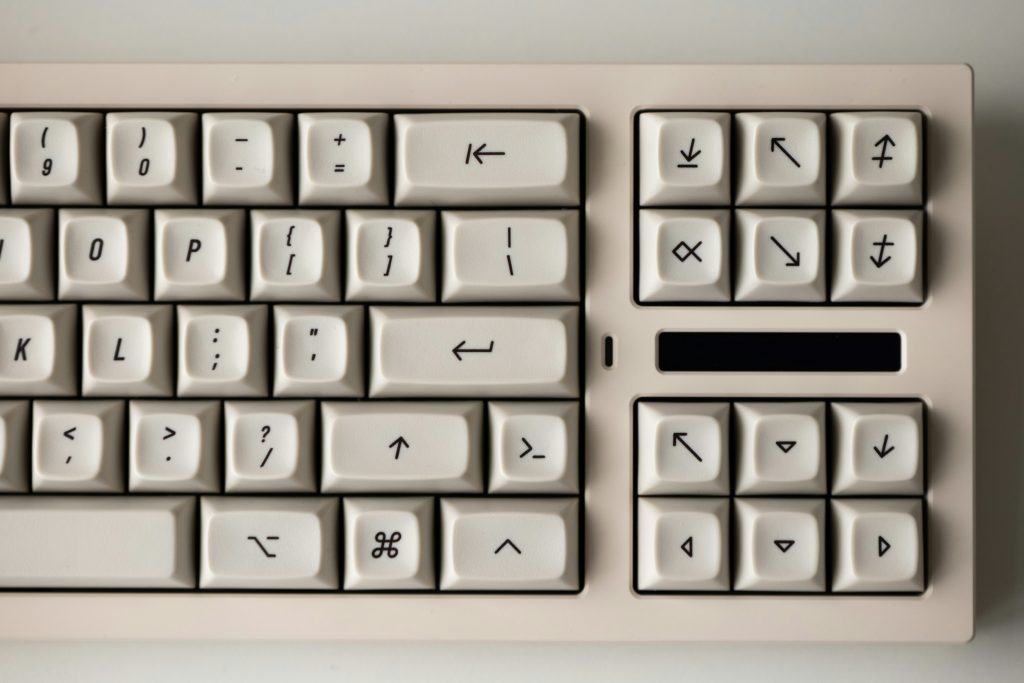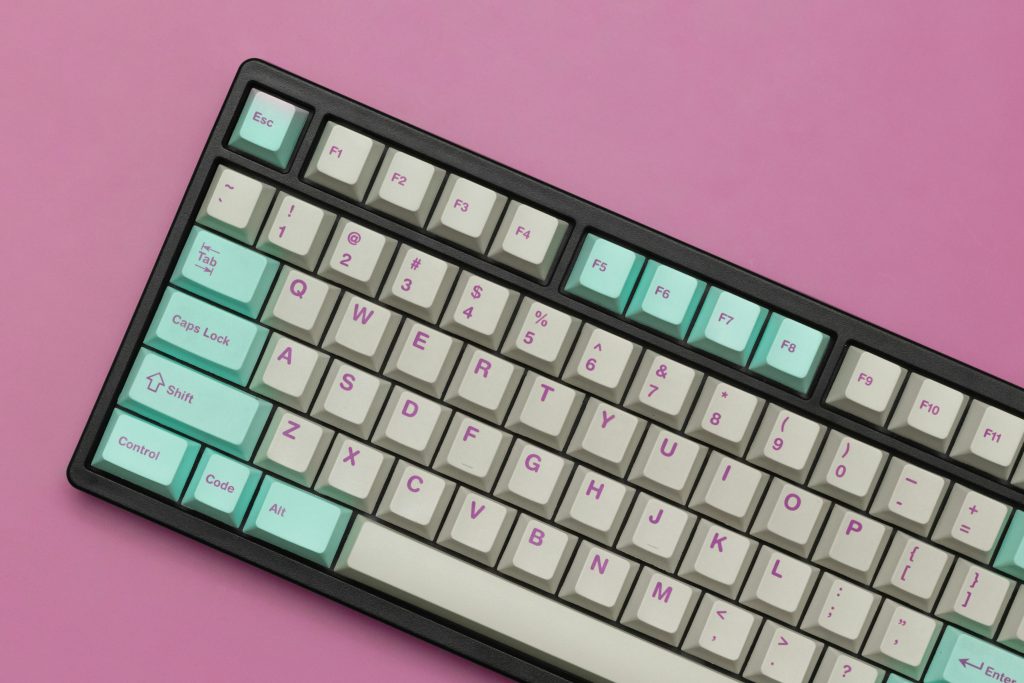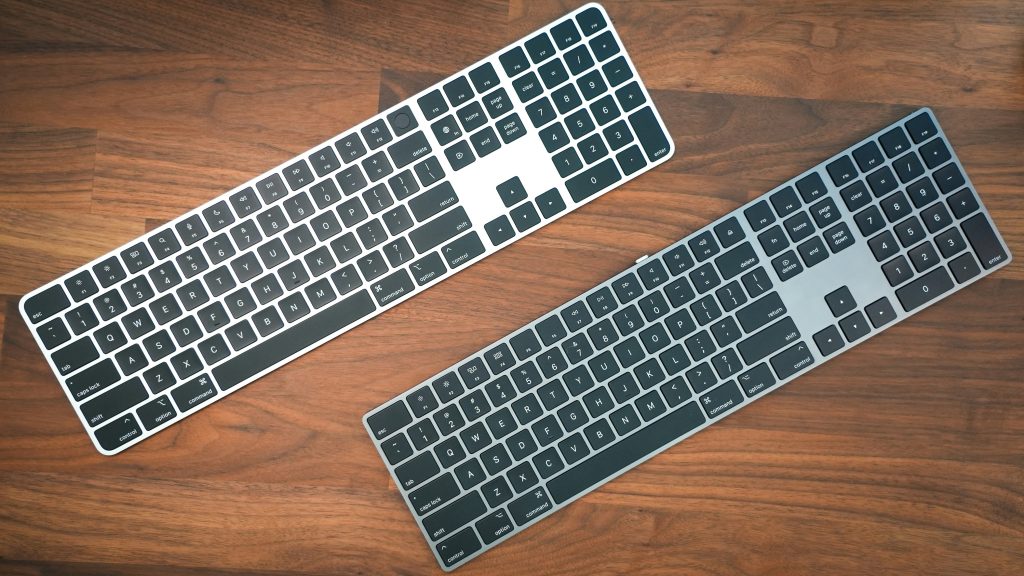Table of Contents
Choosing the right keyboard isn’t just about style or budget—it can directly impact your typing speed, comfort, and long-term health.
In its broadest sense, a keyboard refers to both the software layout of the keys and the physical design of the hardware. To make the right choice, it’s important to understand two things:
- Keyboard layouts – how letters, symbols, and function keys are arranged (software/key placement).
- Keyboard types – the physical design of the hardware itself (mechanical, ergonomic, ISO keyboard vs ANSI, etc.).
This guide explores both, with a special focus on ergonomics and minimizing finger and wrist movement.
Different Keyboard Layouts Explained

What are the 5 Main Keyboard Layouts?
The five most commonly used types of keyboard layouts are:
- QWERTY layout – the standard QWERTY layout used worldwide in English-speaking countries.
- AZERTY layout – mainly used in France and Belgium.
- QWERTZ layout – popular in Germany, Austria, and Central Europe.
- Dvorak layout – an ergonomic alternative designed to improve typing speed and efficiency.
- Colemak keyboard layout – a modern design that reduces finger movement while keeping familiarity with QWERTY.
These different keyboard layouts were developed to support different languages, reduce strain, or adapt to specific preferences.
QWERTY Layout
The QWERTY keyboard layout is the most recognized globally. Originally developed for typewriters in the 19th century, its QWERTY design was intended to prevent typebar jams by spacing out frequently used letters.
Today, the standard QWERTY layout is the default English layout for most modern operating systems and physical keyboards, making it the most practical choice for multilingual users and everyday typing.
AZERTY Layout
The AZERTY keyboard layout is widely used in France and Belgium. It repositions keys like A and Q, provides dedicated keys for accents, supports French input methods, and makes special characters more accessible. This helps users type in French efficiently without relying on complex key combinations.
QWERTZ Layout
The QWERTZ keyboard layout is common in Central Europe. Besides swapping Y and Z, it changes the key layout for symbols, the shift key, and certain non-letter keys to make typing in German more efficient. Many keyboard users in Sweden and Europe prefer it for easy access to special characters.
Dvorak Layout
The Dvorak keyboard was designed to maximize comfort by placing the most commonly used letters on the home row, where fingers rest naturally. This is unlike the standard QWERTY layout, where frequently used keys are spread across the top row, home row, and bottom row.
By reducing movement, the Dvorak layout can improve typing speed, accuracy, and ergonomics. Some studies suggest that long-term use of Dvorak keyboards can significantly boost typing skills, though the learning curve is steeper than with standard keyboard layouts.
Colemak Keyboard Layout
The Colemak is another alternative keyboard layout that prioritizes comfort and ease of transition. It keeps many familiar QWERTY positions while improving efficiency and minimizing finger strain.
Because it’s less drastic than Dvorak, it’s one of the most popular custom keyboard layouts for those who want an ergonomic solution without relearning everything.
Other Alternative Keyboard Layouts
Workman Layout
The Workman keyboard layout was created to balance efficiency with natural finger movement. It reduces lateral strain compared to both QWERTY and Dvorak. While not as widely adopted, it’s considered one of the best layouts for those who want to avoid repetitive stress injuries.
Bépo Layout
The Bépo layout is a French alternative, optimized for accented letters and special characters. Like Colemak, it focuses on reducing movement and improving comfort for those who type in French daily.
Custom Layout Keyboards
In addition to these major designs, users can build customized keyboard layouts with tools like Microsoft Keyboard Layout Creator. This allows personalization of key combinations, symbol keys, and even full functional layout changes.
These various layouts show that there’s no single best system—just the one that fits your typing preferences and needs.
Keyboard Types and Physical Designs

What are the 4 Types of Keyboards?
Beyond layouts, the types of keyboard hardware include:
- Mechanical keyboard – each key has its own switch, providing durability and tactile feedback.
- Membrane keyboard – thinner and quieter, but less tactile.
- Ergonomic keyboard – split or curved keyboard design to reduce wrist strain.
- Full-sized keyboard – includes all the keys: function keys, number pad, navigation keys, modifier keys, and dedicated keys.
Mechanical Keyboard
A mechanical keyboard uses individual switches under each key. This provides tactile feedback, durability, and faster response times. Mechanical keyboards are popular with gamers and professionals who type frequently, as they improve typing speed and reduce errors. They also allow different layouts, hot-swappable switches, and even custom programmable keys.
Membrane Keyboard
A membrane keyboard is thinner, quieter, and often less expensive. Instead of switches, it relies on pressure pads that activate circuits. While they save desk space and are lightweight, membrane models lack the precise feedback of mechanical keyboards. They’re common in office environments, laptops, and basic full-sized keyboards.
Ergonomic Keyboards
Ergonomic keyboards prioritize reducing wrist and finger strain. They may feature:
- Split placement of keys to reduce twisting
- Curved rows for natural hand positioning
- Compact keyboard design to save desk space
- Modified home row and other keys for improved posture
These layouts are excellent for users who type for hours daily.
Full-Sized Keyboard
A full-sized keyboard includes:
- Number pad for calculations
- Function keys along the top row
- Navigation keys (arrows, Page Up, Page Down)
- Control keys like Ctrl, Alt, and the Windows key
- Modifier keys such as the shift key, caps lock, and scroll lock
- Additional keys for media or shortcuts
This standard layout can be found in both ANSI and ISO layout models, ensuring access to all functions, making it ideal for productivity, gaming, and multitasking.
ISO Keyboard vs ANSI Keyboard
The physical layout of keyboards often follows either the ANSI keyboard (standard in the US) or the ISO keyboard (common in Europe).
- ANSI layout: wide left shift key, rectangular Enter key.
- ISO layout: shorter left shift key, tall Enter key, slight differences in key placement.
These different keyboard designs affect comfort and sometimes desk space usage.
Choosing the Best Keyboard for Ergonomics

The best ergonomic choice depends on both layout and physical design:
- For typing speed and minimizing finger movement, Dvorak, Workman, and Colemak layouts outperform the QWERTY keyboard.
- For different languages, AZERTY, QWERTZ, Bépo, and Swedish keyboards provide better support.
- For ergonomic posture, split and curved keyboards with customizable placement of keys help reduce strain.
- For customization, the Keyboard Layout Creator by Microsoft allows you to build your own personalized keyboard layouts.
If you want comfort and efficiency, consider both the layout and the keyboard type itself.
Frequently Asked Questions
What are QWERTY, AZERTY, QWERTZ, and Dvorak?
They are the four most widely used keyboard layouts. QWERTY dominates English, AZERTY supports French, QWERTZ is used in Central Europe, and Dvorak focuses on reducing finger movement for faster typing.
Why Do QWERTY and QWERTZ Exist?
The QWERTY layout was standardized in English-speaking countries, while QWERTZ evolved in German-speaking regions.
In QWERTZ, the Y and Z keys are swapped to reflect language frequency, and certain symbol keys and modifier keys differ. These different layouts exist to better match language-specific needs and typing habits.
Can you create custom keyboard layouts?
Yes. With the Microsoft Keyboard Layout Creator, you can build personalized keyboard layouts tailored to your language, typing preferences, or ergonomic needs.
Which keyboard layout is best for ergonomics?
The Workman and Colemak layouts are among the best for ergonomics. Combined with an ergonomic keyboard, they minimize strain, reduce unnecessary finger movement, and improve long-term comfort.
